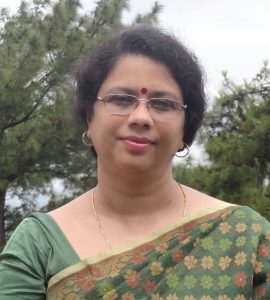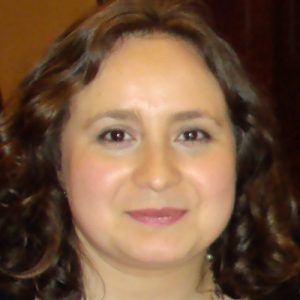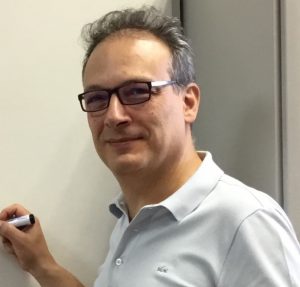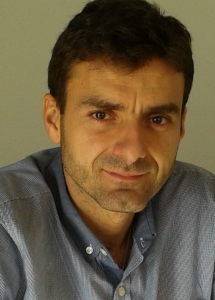Keynote speakers of 9th ESCIM:
Věra Kůrková | Debjani Chakraborty | Rosana Rodríguez-López | Francisco J. Valverde-Albacete | Jesús Medina
Prof. Věra Kůrková received Ph.D. in topology from Charles University, Prague in 1980 and DrSc (equiv. Prof.) in 1999. Since 1990, she has been a scientist with the Institute of Computer Science, Czech Academy of Sciences. From 2002 to 2008, she was the Head of the Department of Theoretical Computer Science. Her research interests include machine learning, mathematical theory of neurocomputing, inverse problems, nonlinear approximation, and optimization. She is an associate editor of the journals Neural Networks, Neural Processing Letters, and in 2008-2009 also of IEEE Transactions on Neural Networks. She is the president the European Neural Networks Society and was the General Chair of conferences ICANNGA 2001 and ICANN 2008. In 2010 she was awarded by the Czech Academy of Sciences the Bolzano Medal for her contributions to mathematics.
Title: Capabilities of Shallow and Deep Networks
Abstract: Although originally biologically inspired neural networks were introduced as multilayer computational models, later shallow architectures (with one hidden layer of computational units) became dominant in applications. Recently, interest in architectures with several layers was revived due to successes of deep convolutional networks. Experimental evidence motivated theoretical research aiming to characterize tasks for which deep networks are more suitable than shallow ones. This lecture will present recent theoretical results comparing capabilities of shallow and deep networks. In particular, it will focus on complexity requirements of shallow and deep networks performing high-dimensional tasks. Connections with the No Free Lunch Theorem, the central paradox of coding theory, and pseudo-noise sequences will be discussed.
Prof. Debjani Chakraborty has been a faculty member of Indian Institute of Technology, Kharagpur since 1997 in School of Management and Department of Mathematics respectively. Dr. Chakraborty received B.Sc. (Mathematics Hons.) in 1987 from University of Calcutta and M.Sc. (1989), Ph.D. (1995) from IIT Kharagpur with CSIR fellowship. She is the recipient of the prestigious Young Scientist Award 1997 in Mathematics from Indian Science Congress Association for her contributions to multi-objective optimization in imprecise and uncertain environment. She has also been awarded the Young Scientist Scheme from Dept. of Science & Technology, Govt. of India in 1997 as an individual scientist. She is a nominated member of the Indian National Science Academy of Science, Allahabad. Her current areas of research include theory and applications of fuzzy logic in optimization, fuzzy geometry, and fuzzy logic in medical science and technology. She has authored more than 120 papers among which more than 70 are in peer-reviewed journals. She has also delivered e-learning through online web and video lecture series on Optimization under NPTEL and MOOC programmes.
Title: Introduction to Fuzzy Geometry
Abstract: Geometry is a branch of mathematics which helps us to explain the shape, size and position of a well-defined object. Fuzzy geometry aids us to do shape analysis mathematically if the object is ill-defined or the position of the object is not clearly known in Euclidean space. Starting from the basic concept of a point, fuzzy geometry is able to capture the locus of the point in the space. The point in fuzzy geometry is named as fuzzy point, which is a collection of crisp points with the different grades of belongingness in the set. In analogy to classical geometry, the fuzzy reference frame, fuzzy distance between two fuzzy points, linear combination of two fuzzy points which results a fuzzy line segment, angle between two fuzzy line segments will be discussed. Mathematical form of fuzzy line, which is formed by extending the fuzzy line segment bi-infinitely, will also be derived. In fuzzy geometry, a fuzzy line may be visualized as a straight, infinitely long, hazy band consisting of a group of crisp lines with varied membership grades. Here, we define four different forms of fuzzy lines: two-point form, point-slope form, slope-intercept form and intercept-intercept form. Interesting results on the inter-relationship between the different forms will also be discussed. Lecture will focus on different results and its consequences mathematically with its geometrical visualization. Lecture will conclude with some possible application areas, e.g.application of fuzzy geometry in multi-objective optimization.
Prof. Rosana Rodríguez-López completed her studies of the bachelor’s degree in Mathematics in 1998 at the University of Santiago de Compostela, Spain, and obtained the Ph.D. degree in Mathematics at the same university in 2005. She is working at the Department of Statistics, Mathematical Analysis and Optimization (Area of Mathematical Analysis), University of Santiago de Compostela (USC), where she is a member of the research group on Nonlinear Differential Equations.
From 2013 to 2016, she was the head of the Department of Mathematical Analysis at USC, and currently she is the vice dean of the Faculty of Mathematics at this university.
She is author or coauthor of more than 60 papers, several of them on the topic of fuzzy differential equations and published in journals such as Information Sciences or Fuzzy Sets and Systems, and has participated in several conferences in this field.
She has been involved in activities about divulgation of Mathematics for high school students, and is part of the team of founders of CorBi Foundation, whose main aim is to apply mathematics and computation to biomedical problems, neurosciences, etc.
Title: On some properties of the solutions to fuzzy differential equations
Abstract: Fuzzy differential equations can be considered an adequate approach to model phenomena subject to uncertainty. However, the properties of the solutions to this type of equations are strongly related to the method followed to define the notion of solution itself. Several approaches are possible, some of them based on different concepts of derivatives for fuzzy-valued functions (Hukuhara, strongly generalized, or generalized Hukuhara differentiability) and other independent of them.
We present some properties of the solutions (in some simple cases, the explicit expressions) using different approaches, and explore some methods for the existence of solutions satisfying certain conditions, highlighting the differences with respect to the classical case.
Prof. Francisco J. Valverde-Albacete received his Eng. Degree in Telecommunications from Universidad Politécnica de Madrid (Spain) in 1992 and his DEng in Telecommunications from Universidad Carlos III de Madrid (Spain) in 2002.
He has been a Researcher at the Computer Science Dept., UNED, Madrid, Spain, and Associate Professor at the Signal Theory and Communications Department, Universidad Carlos III. He has also visited with U. of Strathclyde (UK), U. degli Study di Trento (Italy) and the International Computer Science Institute (ICSI, Berkeley, USA). At present he is a Researcher at the Dpto. de Teoría de la Señal y de las Comunicaciones, Universidad Carlos III de Madrid (Spain). Dr. Valverde-Albacete has published over 60 papers in books, journals, and conferences in applied maths, cognitive, speech, and language processing, machine learning and data mining, where his interests lie. For the past 10+ years, he has been working especially in activating and understanding Formal Concept Analysis as a bioinspired technique to model cognitive process. He was awarded best paper in the ICFCA 2015 conference and in the 2013 workshop on FCA for IR, jointly held with ECIR’13. He is a member of IEEE’s Computational Intelligence Society and ACM.
Title: Why are there so many Semifields in Computational Intelligence?
Abstract: Positive semifields, a type of semirings with a multiplicative group structure, abound in Computational Intelligence, from morphological processing to exotic logics and information processing. In this talk we present a biased exposition of this phenomenon centered around “information semifields”. We conjecture that such abundance stems from the fact that the quantification of information as understood in e.g. Information Science is better though in terms of positive semifields.
Jesús Medina received the M.S. degree in mathematics in 1998 from the University of Granada, Spain, and the Ph.D. degree in mathematics in 2002 from the University of Málaga, Spain. He is Full Professor, and the International Project Manager of the University of Cádiz. He is also the author or coauthor of more than 100 papers presented at conferences and published in scientific journals, including the Journal of Applied Logic, Applied Mathematics Letters, Information Sciences, Fuzzy Sets and Systems, and Computers and Mathematics with Applications. His is interested in the research areas of fuzzy sets, fuzzy rough sets, fuzzy logic, residuated and multi-adjoint logic programming, relational data analysis, and algebraic structures for soft computing. He is a Member of the European Association for Fuzzy Logic and Technology (EUSFLAT).
Title: What is a Galois connection?
Abstract: This talk will be based on the definition of a Galois connection and its dual definition, the adjunction notion, which is also called isotone Galois connection. These operators are fundamentals in diverse areas, such as in algebra, geometry, logic, category theory, etc. The historical introduction, their definitions and different frameworks in which Galois connections are indispensable operators for developing the essential results will be introduced.





